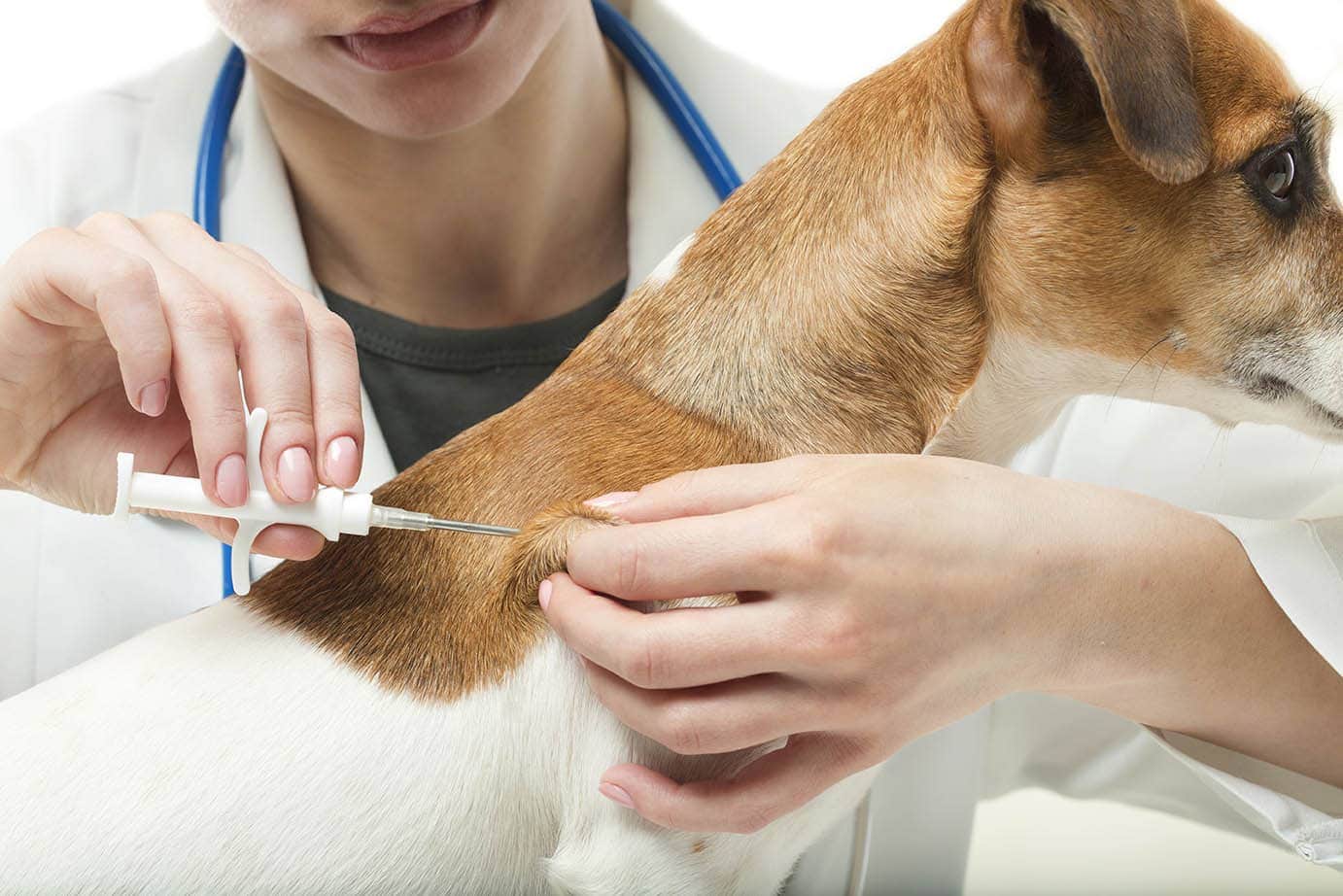When we travel with our dogs around town, it is our responsibility as dog owners to check the rules. Some public transport services allow dogs, and others forbid everything but licensed service dogs.
It really depends on the company and their individual rules and regulations. Some of them might allow dogs with stipulations. It is imperative to find out what these stipulations are so you and your dog can get on the road.

Most Bus Services Allow Service Pets
Service pets are with folks for a reason. These dogs have been specially trained for a particular area of expertise.
For example, diabetic dogs were trained to sense bodily chemicals, letting them alert a person when their sugar is dropping. These dogs save lives and keep people regulated.
Other people have service dogs to compensate for a sense that they lack. If someone is deaf or blind, having a service dog around can help them navigate the world a little more efficiently. Therefore, most public transportation services allow service pets.
Buses are no exception. However, you have to understand that service pets are very different from emotional support animals or your standard pet dog. These pets have undergone expensive and extensive training to perform the task they can do, and they are legally protected under the law, which isn’t true of emotional support animals or pets.

Some Bus Services Might Allow Pets
Not all public bus services allow pets, but some of them might. Emotional support animals are becoming a more common occurrence. These animals accompany people with issues like PTSD, autism and other neurodivergent disorders, and trauma victims.
Having their dog can make them feel more secure in a chaotic world. Because this is becoming more popular, more companies are bending to the needs of the customer.
Also, some locally owned bus companies might be very pet friendly, allowing you to bring Fido along no matter where you go. Ultimately, you will need to call the individual bus service or look up information on their website to see their policies and rules regarding pets on public transport.

What to Remember on the Bus
We’re sure you’ve already thought of several things you need to do before you take your dog on a bus. We have some examples on how to interact with others and make sure your pet is on their best behavior.
1. Respecting Other Passengers Is a Must
You have to remember that not everyone is as gung-ho about dogs as the rest of us dog lovers. Some people are simply opposed to them, others have allergies to them, and others have actual trauma associated with dogs. It’s important to be mindful when you’re taking your animal into public spaces that not everyone is going to be receptive.
2. Only Take Trained Dogs
Don’t try to take a rambunctious puppy or playful young dog on any type of public transport. Not only could that pose a fall hazard to passersby, but it could also cause a commotion, making it hard for you to control.
Anything your dog does while you are out, you alone are responsible for.

3. Try Not to Take Extremely Large or Multiple Dogs
If you’re going to be on any kind of public transportation, don’t bite off more than you can chew. If you have an extra-large dog, that will be extremely hard to navigate and they will take up a lot of space, so it might be best to leave them at home.
If you have multiple dogs with leashes going every which way, it can be a tripping risk. After all, having more than one or two dogs on public transport can be very complicated to manage.
4. Don’t Let Your Dog Invade People’s Space
Just because someone is nice about your dog coming up to sniff them doesn’t mean they necessarily want your dog in their business. If you are in a public space, make sure to keep a very tight grip on your animal.
Some people are going to work and don’t need to have your pup’s friendly slobbery kisses all over their nice business attire.

5. Consider Potential Issues
There are several other issues you should consider before traveling with your dog. Here are some questions you can ask yourself.
- What if your dog needs to go to the bathroom while you’re traveling?
- Are they trained enough to hold it until you make it off the bus?
- Do you have suitable supplies if they make a mess?
- Are you able to prevent them from chewing and tearing up items?
- Are you able to ensure that they won’t snatch food out of another person‘s hand?
- Can you prevent them from licking a child in the face?
- Is your dog in any way aggressive?
- Should you put a muzzle on your dog as a precaution?
These are all things you should answer before taking the bus to ensure a terrific, stress-free travel experience.

What You Need for Public Transport
If you plan to take your dog with you on a bus, and they match all of the criteria for that particular company, it’s time to gather supplies. Anytime you go traveling with your dog, there’s likely going to be a few trusted supplies you go to out of default.
However, for buses, you might not have thought of a few of these gizmos and gadgets.
1. Proper Gear
To safely and securely have your dog on a bus, it is important to have the right gear. Not only will you need a collar for identification purposes, but you will also need a harness and leash to control your animal fully. A harness will allow you better control, as well as make it harder for your dog to slip away from you and high traffic.
2. Signs/Vests

If you have a service animal, it might be appropriate for them to wear a vest or sign to signal their purpose. Often, a service dog should not be petted by the general public. It is important to let people know that this is a working animal and not a domestic pet.
3. Vaccinations
Anytime your dog will be around people or other pets, it is important to ensure they are up-to-date on their vaccinations. If you haven’t been to the vet in a while, contact your vet to see if they need any updates before traveling.
Often, companies require proof of vaccinations to ensure safety. Be prepared to print off or pick up your vaccination records before traveling.
4. Tags
Tags are very useful for several reasons. First, your dog will get a tag proving that they have had their rabies vaccine. They should have this annually to show they pose no danger in the event they were in a sticky situation.
Also, people put identification tags on that have the name, address, and phone number of the owner. This way, if they ever escape, anyone who finds them will have a direct line of communication and write to you.
5. Microchip

Accidents happen. Sometimes dogs get away from us without us expecting it. One loud noise, one wrong move, one freak incident, and they could bolt. Microchipping is a very common method of keeping track of your pets.
While the science behind it isn’t perfect, it can help lost pets find their way back home, permitting all of the information is up to date.
6. AirTag
More and more people are putting AirTags or pet-specific tracking devices on their dog’s collar. This is another really fantastic method of tracking that can easily help people locate their dogs when they are lost.
7. Backpack
A backpack is a terrific way to carry supplies without having to use your hands. After all, they will already be quite full with your dog. Instead, you should have a backpack or satchel where you can store supplies to make the outing easier.
8. Collapsible Bowls

Your dog still needs to eat or drink, even on the go. It is important to have a way to give them food and fresh water. Now, there are collapsible bowls, usually made out of silicone.
You can pop them out to fill and clean them and pack them away when you’re finished. They are extremely easy to use, durable, and terrific for all pet parent traveling needs.
9. Hard Carrier
Some little dogs might need to go in a hard carrier. First, going on a bus can be a very stressful situation, especially for our small canine buddies. Because it can be so overwhelming, having a hard carrier can actually be a secure means of protection for the dog.
A dog might feel a lot better in a safe enclosure feeling slightly protected than being out and vulnerable. If you have a dog that exhibits any kind of aggression, having a hard carrier might be a must for them as well to prevent any incidents from occurring with strangers.
10. Treats
Our dogs can be quite well-behaved on the road, but sometimes they need a little incentive. It’s always best to have some trusty treats on hand to distribute as needed. When traveling, getting small, crunchy or slightly soft treats for quick rewards is always best.
If you have mushy or soft, time-consuming, or messy treats, they are likely not great options for bus rides.
11. Poop Bags
There might be an accident. Even the most well-trained dogs have trouble sometimes. Have some poop bags on hand for stops in between or any accidents that might occur on the bus. Even if you think your dog wouldn’t, it’s important to make sure you’re prepared in case they do. Having dog wipes on hand can help deal with cleanups when messes or accidents occur.
12. Fresh Water
Your pup needs fresh water! You can take a water bottle or two on the go to make sure you can fill them up as needed. Remember, there will be no running water on the bus, so it is imperative to think ahead about all the necessities.

Conclusion
Now you understand a little bit more about how to take your dog on buses. Remember, don’t just assume that a public transport service takes emotional support animals or pets. Always make sure to double-check so you aren’t caught off guard or late to your plans if you have somewhere to be. Service animals are a different story, and are generally allowed on public transportation.
See also:
Featured Image Credit: hedgehog94, Shutterstock



















